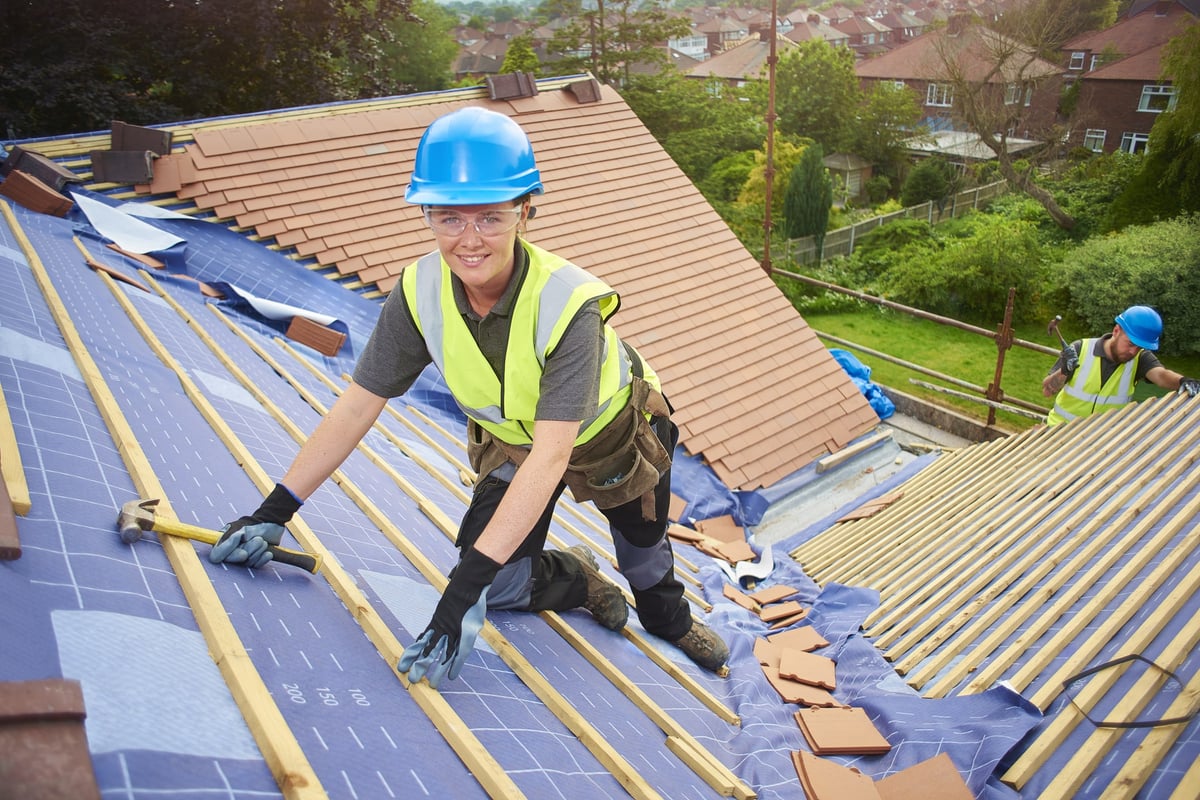Exactly How to Review Various Roof Alternatives for Your Building Needs
Examining roofing options for your structure requires a detailed method that thinks about numerous variables such as the planned use the structure, regional environment problems, and material qualities. It is necessary to weigh the benefits and downsides of different roof covering types, from asphalt roof shingles to steel and clay tiles, while likewise considering initial expenses and long-lasting maintenance. Furthermore, comprehending power performance and visual charm can influence your choice. As you consider these considerations, one concern remains: which variables will ultimately guide your choice for a lasting and visually pleasing roofing option?
Analyzing Your Structure's Requirements
To successfully evaluate roofing options, begin by thoroughly evaluating your building's demands. Start by considering the structure's intended usage, as different structures might demand differing roof covering specifications. For example, residential roofing systems often prioritize looks and insulation, while business structures may concentrate on longevity and load-bearing capacity.
Next, review the neighborhood environment conditions that will impact roofing efficiency. Factors such as temperature level variations, rainfall degrees, and wind patterns can influence product choice and style. A roofing system that stands out in a temperate environment may not perform too in locations prone to heavy snowfall or extreme heat.
In addition, assess the architectural stability of your building. Ensure that the existing framework can support the selected roof covering materials, particularly if taking into consideration much heavier choices. It is likewise essential to assess any kind of neighborhood structure codes or regulations that may determine particular requirements for roof.

Contrasting Roof Products
Once a comprehensive evaluation of your structure's requirements has actually been finished, the next action entails contrasting various roof products. Each product offers distinctive benefits and disadvantages, making it necessary to straighten your selection with your particular requirements and situations.
Asphalt tiles are widely acknowledged for their price and simplicity of installment, making them a popular option for household structures. On the various other hand, metal roof covering, known for its longevity and durability, can stand up to harsh weather conditions however may include a greater first financial investment.
Clay and concrete tiles supply exceptional thermal insulation and visual charm, particularly for Mediterranean-style style, yet they require an even more robust structural assistance because of their weight. Wood shakes offer a natural look and excellent insulation residential or commercial properties but may demand extra maintenance and are at risk to fire risks.
Assessing Price and Budget Plan
Analyzing your roof covering alternatives demands a careful analysis of price and budget factors to consider. The total budget for a roof covering project comprises a number of elements, including product prices, labor costs, maintenance, and potential long-term financial savings. It is vital to establish a clear spending plan before discovering specific roofing materials, as this will direct the decision-making procedure and assist you prevent overspending.
Begin by acquiring quotes from multiple professionals to comprehend labor prices in your region. Guarantee that these price quotes include all essential solutions, such as removal of the old roof, setup, and any type of added attributes, like insulation or air flow improvements - Perrysburg Roofer. Next, assess the price of different roofing materials, thinking about both preliminary setup expenses and expected life expectancy

Comprehending Energy Performance
Power effectiveness plays a vital duty in the important site selection of roof products and systems, considerably impacting both power consumption and total convenience this link within a structure. An appropriate roof covering can enhance thermal efficiency, lowering the requirement for home heating and cooling systems, which in turn lowers energy bills and minimizes ecological impact.
When examining roof covering alternatives, think about materials that reflect rather than soak up warm. Light or reflective roof products can considerably decrease roofing system surface area temperatures, causing lower energy use throughout hot months. In addition, proper insulation and air flow are necessary to maximize the power efficiency of the entire roof. Insulation prevents warmth transfer, while ventilation mitigates warm build-up in the attic room area.
One more vital element is the roofing system's longevity and upkeep needs. Long lasting products that require less regular substitute add to long-term energy cost savings. The energy efficiency of a roof covering system can likewise be analyzed through its compliance with recognized sustainability rankings such as ENERGY CELEBRITY or LEED.
Taking Into Consideration Visual Appeal
A roof's visual charm dramatically affects the overall appearance of a building, enhancing its building style and improving visual appeal. Toledo Roofer. When evaluating roof covering choices, it is necessary to consider just how the chosen material, shade, and layout will certainly balance with the existing structure and area. A well-designed roofing system can boost also the easiest of structures, changing them right into aesthetic centerpieces
Various roofing materials provide numerous visual qualities. For instance, conventional roof shingles may stimulate a timeless beauty, while metal roofing can give a modern-day, sleek appearance. In addition, the color of the roof material plays an essential role; lighter shades can make a building show up even more sizable, while darker tones might produce a cozier setting.
In addition, building aspects, such as dormers and eaves, can improve the roofing system's aesthetic influence. It is a good idea to consult with specialist developers or engineers to ensure the selected roof covering choice aligns with the total layout intent. Ultimately, a roof should not just offer functional advantages yet additionally contribute positively to the structure's visual, reflecting the owner's taste and the personality of the surrounding atmosphere.
Conclusion
